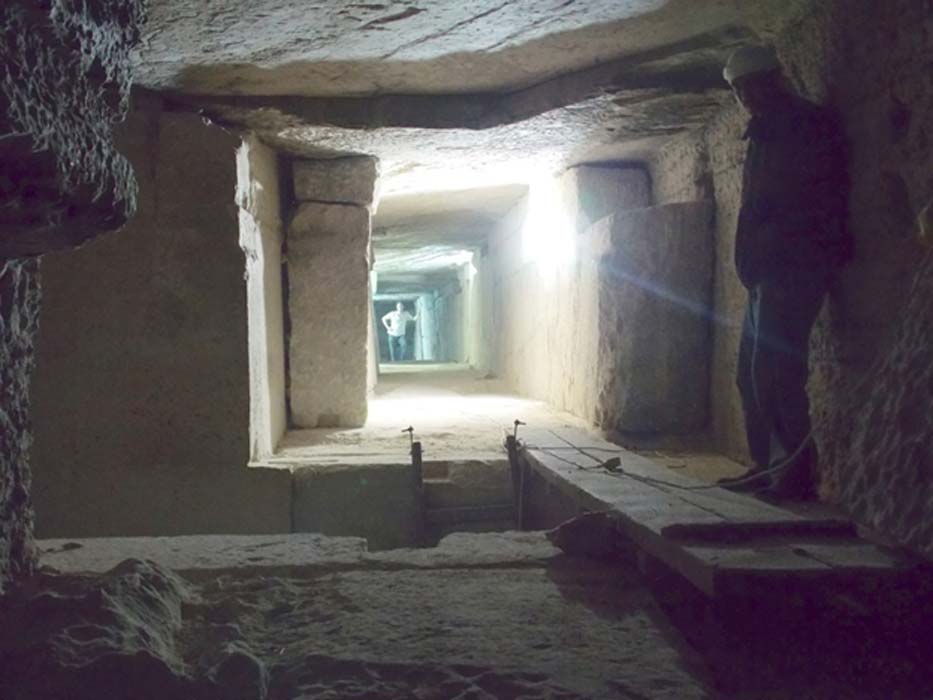Huge 4000-year-old Underground Hidden Tomb of Cult Egyptian King Senwosret III Will Soon Open to the Public
The tomb of King Khakaure Senusret III (Senwosret III), one of the most dominant and popular pharaohs of ancient Egypt’s Middle Kingdom, is set to open to the public within a couple of years. This will provide an opportunity for visitors to descend into the underground chambers and marvel at the architecture of the Egyptian builders who constructed the burial complex nearly four thousand years ago.
Amazing Architecture in an Uncomfortable Environment
According to Dr. Josef Wegner, Associate Curator of the Egyptian Section of the University of Pennsylvania Museum of Archaeology and Anthropology, who has been excavating in Abydos for decades, this is the largest tomb at Abydos and dates back to 1850 BC. The tomb measures 200 meters (656 ft) in length and 45 meters (148 ft) deep and its architecture is one of a kind.
“The architecture is amazing. It’s like going into a pyramid. Its architecture is symbolic – depicting the sacred journey into the afterlife,” Wegner tells Popular Archaeology.
He then goes on explain that the entrance of the tomb faces westwards (epitomizing death, as the sun sets in the west) and the underground complex curls under a sacred natural mountain, known as Anubis-Mountain in antiquity, to face the eastern horizon, the side from where the sun rises, symbolizing rebirth. “For the Egyptians, that the sun vanishes in the west and magically rises in the east is one of the secrets of the universe, giving them the power of rejuvenation,” Wegner says as Popular Archaeology reports.

Steep corridor down into the hidden tomb 45 meters underground (Credit: Josef Wegner and the Penn Museum)
He also adds that the air inside the burial complex is limited and that can make some people uncomfortable, “Some people get a little nervous going into it. When we first opened it, it was full of debris, so we had to crawl on our hands and knees and slither like a snake,” he says.
Now though, the people who decide to visit will not have to crawl since stairs with handrails, lights, and a ventilation system have been installed, while debris and broken blocking stones were also removed in order to make it easier for visitors to walk upright.
- Two 26th dynasty tombs unearthed in Egypt containing mummies and fascinating grave goods
- Four New Kingdom rock-hewn tombs discovered in Egypt
- Ancient tomb containing mummy and 180 figurines found in Egypt

Clearance work in one of the chambers of the tomb. (Credit: Josef Wegner and the Penn Museum)
Who King Khakaure Senusret III Was
Khakaure Senusret III, also known as Senwosret III, ruled from 1878 to 1839 BC during a time of great power and prosperity in Egypt. He was the fifth monarch of the Twelfth Dynasty of the Middle Kingdom. He is generally regarded as one of the most dominant and powerful pharaohs of the Twelfth Dynasty, as his military campaigns gave birth to a bright era of peace and economic prosperity that reduced the power of regional rulers and led to a revival in craftwork, trade and urban development. Senusret III was one of the few kings who were deified and honored with a cult during their own lifetime.

Senwosret III as a Sphinx, circa 1878–1840 BC from Egypt, possibly Upper Egypt (Public Domain)
The Importance of Senwosret III’s Tomb
Despite being discovered and explored first in 1901 by Arthur Weigall, the tomb would not be meticulously excavated until Wegner and his team reopened it almost a century later, in 2005. Since then, more detailed features of the tomb structure have been revealed. For example, it was found to be devoid of wall decoration, but its interior was lined with well-dressed masonry of Tura limestone and red Aswan quartzite. The burial chamber contained the broken remains of the king’s granite sarcophagus and canopic box, and it was protected by a complicated system of immense stone blocks and architectural techniques for concealing the royal burial’s location. Many of the blocking stones weighed over 50 tons and were designed in a way to prevent access by tomb robbers into the burial chamber itself.
- Two 3,500-year-old tombs adorned with vivid paintings unearthed in Egypt
- Remains of a 7,000-Year-Old Lost City Discovered in Egypt
- The Abydos King List is a trove of information, preserving the identities of 76 kings of ancient Egypt

The recently revealed massive tomb complex of Senwosret III, showing well-dressed masonry. (Credit: Josef Wegner and the Penn Museum)
Most importantly, however, the Senwosret III tomb is now the first known example of a hidden royal tomb, representing a change from the ancient traditional concept of the royal pyramid to that of a royal subterranean complex like those of the later royal burials in the Valley of the Kings at Thebes. Describing the tomb, Wegner and researchers write as Popular Archaeology reports, “the tomb itself extends beneath the peak of Anubis-Mountain which serves as a substitute for the built pyramid. This name occurs on many clay impressions produced by a necropolis seal that was used extensively in a variety of administrative and ceremonial activities at the tomb site.”
Ultimately, according to Popular Archaeology, Wegner and his team from the University of Pennsylvania are about to return to Abydos during the summer to continue their excavation.
Top image: Chamber in the Tomb of Senwosret III. The tomb features sloping passages between chambers. (Credit: Josef Wegner and the Penn Museum)



















